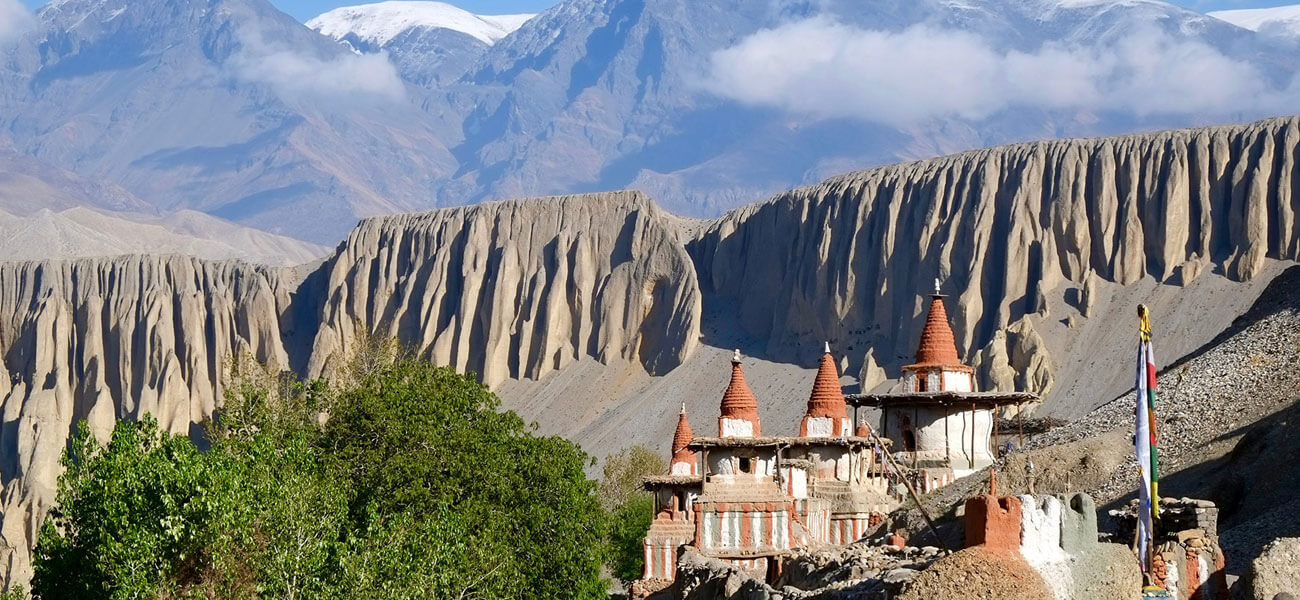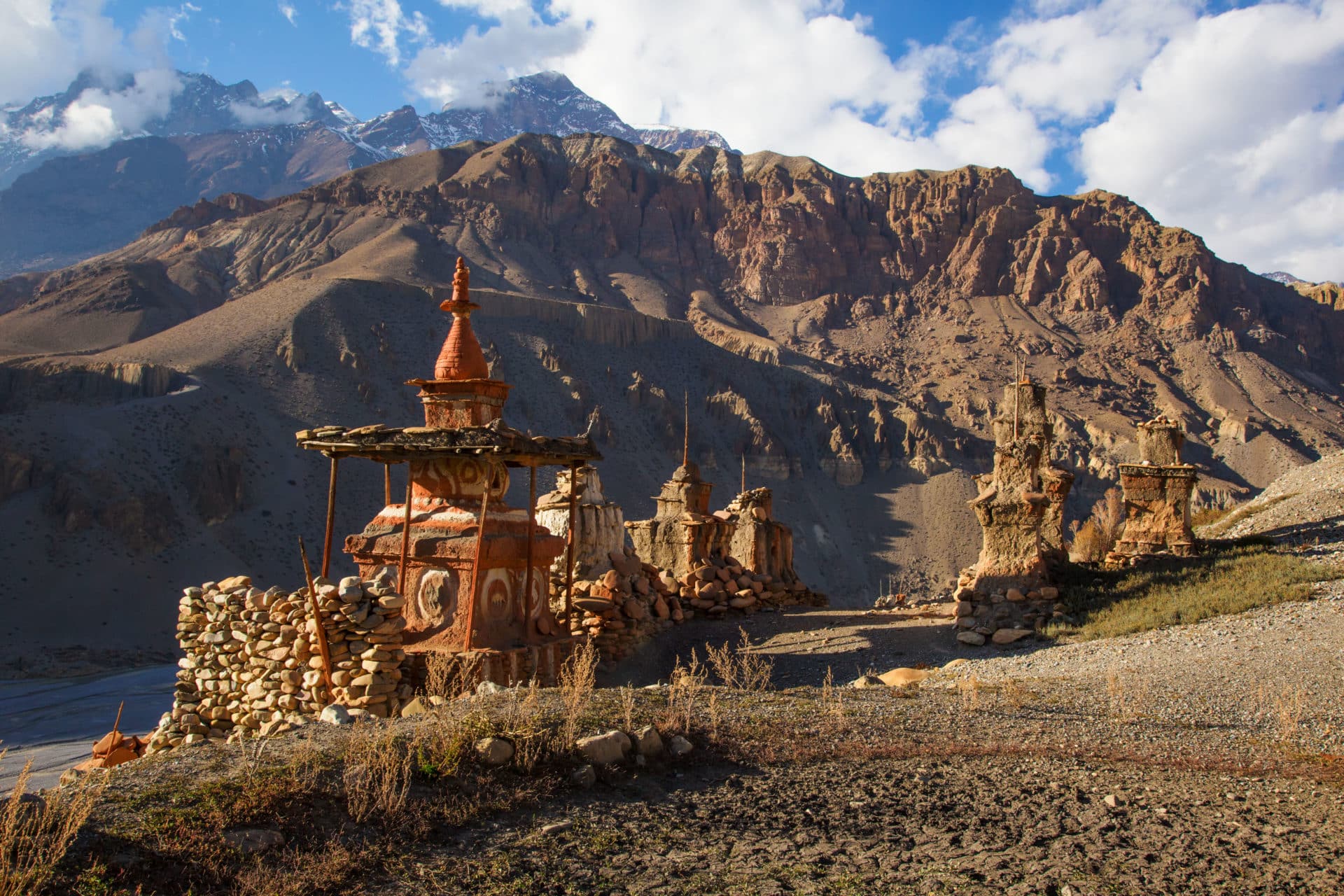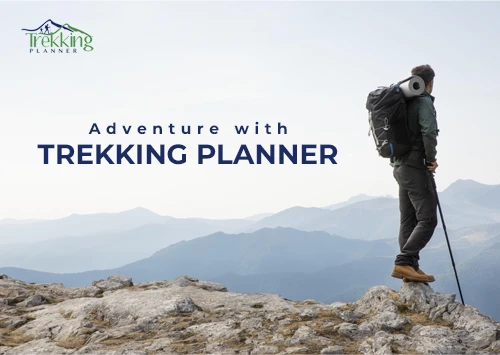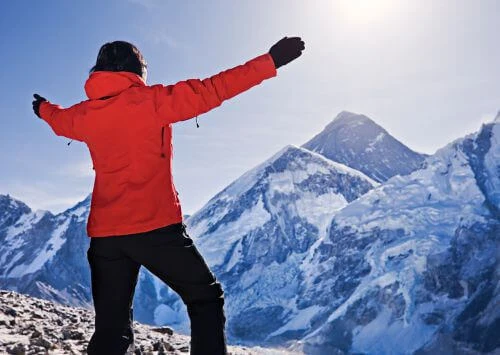From a Forbidden Kingdom to a Tourist Destination: Tracing Mustang's Historical Evolution.
Nestled in the shadow of the Himalayas lies a Forbidden Kingdom that has captured the imagination of travelers for centuries. Mustang, once a remote and inaccessible region of Nepal, has transformed into a popular tourist destination, attracting visitors from all over the world. But Mustang's Journey from isolation to tourism is a fascinating story that traces back centuries. Mustang's History is rich and complex, From its thriving trade hub on the Silk Road to its status as a semi-autonomous kingdom. Over the years, it has been influenced by various cultures, religions, and political forces, shaping its unique identity. Join us as we delve into the historical evolution of Mustang, uncovering its ancient past and tracing its path to becoming the vibrant tourist destination it is today.
Mustang's History as a Forbidden Kingdom.
Mustang, also known as the Kingdom of Lo, is a region in northern Nepal that borders Tibet. The region was a part of the Tibetan Empire until the 14th century, when it became an independent kingdom. Mustang was a strategic location on the trade route between Tibet and India, and the kingdom prospered as a center of commerce. However, in the 18th century, the region came under the control of the Nepalese monarchy, and the kingdom was forced to pay tribute to Nepal.
In the mid-20th century, Mustang was closed off to the outside world, and foreigners were prohibited from entering the region. The kingdom remained isolated until the 1990s, when Nepal opened its borders to tourism. Mustang was one of the last regions to be opened up, and even today, visitors require a special permit to enter the region.
Despite its isolation, Mustang has a rich cultural heritage that has been preserved over the centuries. The region is home to several Buddhist Monasteries and ancient caves that contain intricate murals and carvings. The people of Mustang are predominantly Tibetan, and their language, religion, and customs are similar to those of Tibet.

Mustang's Opening to Tourism.
In the 1990s, Nepal began promoting tourism as a means of economic development, and Mustang was one of the regions that were targeted for tourism development. However, the government was careful to limit the number of visitors to the region to preserve its fragile environment and cultural heritage. Today, visitors to Mustang require a special permit, and they must be accompanied by a licensed guide.
The opening of Mustang to Tourism has had a significant impact on the region's economy. Tourism has become the primary source of income for many people in the region, and it has created jobs in the hospitality and service industries. The influx of tourists has also led to the development of infrastructure such as roads, airports, and hotels.
However, the rapid growth of tourism has also raised concerns about its impact on the region's environment and cultural heritage. The government and local communities have taken steps to promote responsible tourism and protect the region's fragile ecosystem.
Cultural Significance of the Mustang.
Mustang has a rich cultural heritage that is closely tied to its history and geography. The region's isolation has allowed it to preserve its unique identity and traditions, and visitors to Mustang can experience a way of life that has remained unchanged for centuries.
The people of Mustang are predominantly Tibetan, and their culture and traditions are closely related to those of Tibet. The region is home to several Buddhist monasteries and ancient caves that contain intricate murals and carvings. The Tiji festival, held annually in the walled city of Lo Manthang, is a vibrant celebration of Tibetan Culture and Religion.
Visitors to Mustang can also experience the region's traditional cuisine, which features dishes such as momos (dumplings) and thukpa (noodle soup). The region's music and dance forms are also unique and reflect the influence of Tibetan culture.
Mustang's Unique Geography and Climate.
Mustang's unique geography and climate have contributed to its isolation and have also made it a popular destination for adventure tourism. The region is located in the rain shadow of the Himalayas, and as a result, it is dry and arid. The landscape is characterized by rugged canyons, deep gorges, and towering cliffs.
The region is also home to several trekking trails that offer breathtaking views of the Himalayas. The most popular trekking routes include the Upper Mustang Trek and the Annapurna Circuit trekking. Visitors can also explore the region on horseback or by mountain bike.
Mustang's climate is harsh and unpredictable, with temperatures ranging from -15°C to 25°C. The region is prone to strong winds, dust storms, and occasional snowfall. Visitors are advised to plan their trips during the spring and autumn months, when the weather is mild and dry.

Mustang's Festivals and Events.
Mustang is home to several festivals and events that reflect the region's cultural heritage and traditions. The Tiji festival, held annually in the walled city of Lo Manthang, is a three-day celebration of Tibetan Culture and Religion. The festival features colorful parades, music, dance, and traditional performances.
The Yartung festival, held in the village of Muktinath, is a celebration of the region's horse culture. The festival features horse races, archery competitions, and traditional performances.
Visitors to Mustang can also participate in local festivals such as Losar (Tibetan New Year) and Saga Dawa (Buddha's Birthday). These festivals provide visitors with an opportunity to experience the region's culture and traditions firsthand.
Responsible Tourism in Mustang.
The rapid growth of Tourism in Mustang has raised concerns about its impact on the region's environment and cultural heritage. The government and local communities have taken steps to promote responsible tourism and protect the region's fragile ecosystem.
Visitors to Mustang are required to obtain a special permit, and they must be accompanied by a licensed guide. The government has also imposed restrictions on the number of visitors to the region to limit the impact on the fragile environment.
Local communities have also taken steps to promote sustainable tourism practices. The use of plastic bags and bottles is prohibited in some areas, and visitors are encouraged to use reusable containers. The region's trekking trails are also subject to strict conservation measures to protect the fragile ecosystem.
Mustang's Economic Development Through Tourism.
Tourism has become the primary source of income for many people in Mustang, and it has contributed to the region's economic development. The growth of tourism has created jobs in the hospitality and service industries, and it has led to the development of infrastructure such as roads, airports, and hotels.
The government has also invested in tourism infrastructure such as trekking trails, accommodations, and transportation. These investments have helped to support the growth of tourism in the region and have provided economic opportunities for local communities.
The Allure of Mustang: Why it's a Must-visit Destination for Trekkers
Nestled amidst the majestic Himalayas, the Mustang regionof Nepal is a true trekker's paradise. This enchanting land, once a forbidden kingdom, has long captivated the hearts of adventurers and outdoor enthusiasts from around the world. With its awe-inspiring landscapes, rich cultural heritage, and untamed wilderness, Mustang has become a must-visit destination for trekkers seeking an unforgettable journey.
The rugged beauty of Mustang is a testament to its unique geographical location. Situated in the rain shadow of the Himalayas, this region enjoys a dry, almost desert-like climate, creating a stark contrast to the lush greenery of other parts of Nepal. Towering peaks, deep canyons, and ancient cave dwellings dot the landscape, offering trekkers a sense of wonder and exploration at every turn.
What sets Mustang apart is its rich cultural heritage, which has been preserved over centuries. The local Tibetan-influenced culture, with its vibrant festivals, intricate art, and centuries-old monasteries, provides a glimpse into a way of life that has remained largely unchanged for generations. Trekkers who venture into Mustang are not merely hiking through a landscape; they are immersing themselves in a living, breathing testament to the resilience and adaptability of the human spirit.
Mustang's Unique geography and landscape
The Mustang region is a land of contrasts, where the rugged and the serene coexist in perfect harmony. Situated in the rain shadow of the Himalayas, Mustang boasts a unique geography that sets it apart from other trekking destinations in Nepal.
The landscape of Mustang is dominated by towering peaks, deep canyons, and arid, almost lunar-like terrain. The region's high-altitude environment, with its thin air and extreme temperatures, creates a challenging yet captivating trekking experience. Trekkers will be rewarded with breathtaking vistas of the Annapurna and Dhaulagiri ranges, their snow-capped peaks reaching towards the heavens.
One of Mustang's most distinctive features is its distinctive geological formations, known as the "Kali Gandaki Gorge." This deep, winding canyon, carved by the Kali Gandaki River, is the deepest gorge in the world, offering trekkers a unique perspective on the sheer power of nature. As they descend into the gorge, trekkers will be awed by the towering cliffs and the ever-changing colors of the rock formations, each layer a testament to the region's ancient geological history.
Interspersed throughout the rugged landscape are the remnants of Mustang's rich cultural heritage, including ancient cave dwellings, centuries-old monasteries, and traditional Tibetan-style villages. These hidden gems offer trekkers a glimpse into the region's past, allowing them to connect with the local people and their way of life in a truly authentic way.
Essential trekking gear and preparation for a Mustang trek
Trekking in Mustang is a challenging endeavor that requires meticulous preparation and the right gear. The high-altitude environment, unpredictable weather, and rugged terrain demand that trekkers be equipped with the proper equipment and have a good understanding of the region's unique conditions.
One of the most critical pieces of gear for a Mustang trek is a high-quality, well-insulated jacket. The region's extreme temperatures, which can plummet well below freezing, necessitate a warm, wind-resistant outer layer that can protect trekkers from the elements. Additionally, a sturdy pair of hiking boots with good traction is essential for navigating the rocky, uneven terrain.
Proper hydration and nutrition are also crucial for a successful Mustang trek. Trekkers should pack a reliable water filtration system and plenty of high-energy, nutrient-dense snacks to sustain them throughout the journey. Altitude sickness is a real concern in this region, so trekkers should also be equipped with medications and knowledge of how to recognize and manage the symptoms.
In addition to the physical gear, trekkers should also prepare mentally and emotionally for the challenges of a Mustang trek. The high-altitude environment can be physically and mentally taxing, and trekkers should be ready to push their limits and adapt to changing conditions. Engaging in regular physical training, practicing mindfulness and meditation, and researching the region's history and culture can all help trekkers prepare for the adventure that awaits them in Mustang. For a more detailed trekking equipment list, click here.
Popular Mustang Trekking Routes and Itineraries
The Mustang region offers a variety of trekking routes, each with its own unique set of challenges and rewards. Whether you're a seasoned trekker or a newcomer to the sport, there's a Mustang itinerary that will suit your skill level and interests.
One of the most popular trekking routes in Mustang is the Annapurna Circuit, which takes trekkers through the heart of the region and offers breathtaking views of the Annapurna and Dhaulagiri ranges. This challenging trek typically takes around 21 days to complete and includes a crossing of the Thorong La Pass, one of the highest mountain passes in the world.
For those seeking a more moderate challenge, upper mustang jeep tour is a popular choice. This 12-day trek takes trekkers through the ancient walled city of Lo Manthang, the former capital of the Kingdom of Mustang, and offers a glimpse into the region's rich cultural heritage. Along the way, trekkers will encounter traditional Tibetan-style villages, ancient monasteries, and stunning landscapes.
For those with limited time or who are new to trekking, the jomsom muktinath Short Trek is a great option. This 8-day trek takes trekkers through the lower regions of Mustang, allowing them to experience the region's unique geography and culture without the added physical challenge of higher altitudes. This route is perfect for those looking to get a taste of Mustang without committing to a longer, more strenuous trek.
No matter which Mustang trekking route you choose, you can be sure that you'll be rewarded with breathtaking vistas, rich cultural experiences, and memories that will last a lifetime. With careful planning and preparation, trekkers can ensure that their Mustang adventure is a safe, enjoyable, and unforgettable experience.
Mustang's Rich Cultural Heritage and Ancient Monasteries
Mustang's cultural heritage is a tapestry of ancient traditions, intricate art, and centuries-old monasteries that have stood the test of time. As trekkers explore this captivating region, they will be immersed in a world that seems to have been frozen in time, a testament to the resilience and adaptability of the local Tibetan-influenced culture.
One of the most striking features of Mustang's cultural heritage is its network of ancient monasteries, many of which date back hundreds of years. These sacred sites, adorned with intricate murals, elaborate statues, and colorful prayer flags, serve as a window into the region's deep spiritual roots. Trekkers who visit these monasteries will have the opportunity to witness traditional religious ceremonies, learn about the region's Buddhist beliefs, and gain a deeper understanding of the local way of life.
In addition to the monasteries, Mustang is home to a wealth of traditional Tibetan-style villages, where time appears to have stood still. These settlements, nestled amidst the rugged landscape, offer trekkers a glimpse into the daily lives of the local people, from their farming practices to their vibrant festivals and celebrations. Trekkers who take the time to interact with the locals and immerse themselves in the community will be rewarded with a deeper appreciation for the region's rich cultural heritage.
The art and craftsmanship of Mustang are also a testament to the region's cultural legacy. From the intricate thangka paintings found in the monasteries to the exquisite textiles and metalwork produced by local artisans, the artistic traditions of Mustang are a source of immense pride and cultural identity for the people of this remarkable region. Trekkers who seek out these artistic treasures will be captivated by the skill and creativity of the local craftspeople and will come away with a deeper understanding of the region's unique cultural identity.
Mustang's Wildlife and Natural Wonders
Mustang's unique geography and climate have given rise to a diverse array of wildlife and natural wonders that captivate trekkers and nature enthusiasts alike. From the towering peaks of the Himalayas to the deep canyons carved by the Kali Gandaki River, this region is a true haven for those seeking to immerse themselves in the untamed beauty of the natural world.
One of the most remarkable features of Mustang's natural landscape is the Kali Gandaki Gorge, the deepest gorge in the world. As trekkers descend into this awe-inspiring canyon, they will be surrounded by towering cliffs and rock formations that have been sculpted by the relentless flow of the Kali Gandaki River over the course of millennia. The sheer scale and grandeur of this natural wonder are truly humbling, and trekkers will be left in awe of the raw power of nature.
Mustang is also home to a diverse array of wildlife, including the elusive and majestic blue sheep, also known as the Himalayan bharal. These graceful creatures, with their distinctive blue-gray coats, can often be spotted grazing on the rugged slopes of the region's mountains, offering trekkers a rare glimpse into the natural world. Other wildlife that can be found in Mustang include the Himalayan griffon vulture, the Tibetan wolf, and the Himalayan brown bear, each of which plays a vital role in the delicate ecosystem of this remarkable region.
In addition to its iconic wildlife, Mustang is also home to a number of natural wonders that have captured the imagination of trekkers and adventurers from around the world. From the ancient cave dwellings that dot the landscape to the stunning turquoise lakes that reflect the towering peaks of the Himalayas, Mustang is a true feast for the senses, offering trekkers a chance to connect with the natural world in a way that is both humbling and awe-inspiring.
Best Time to Visit Mustang For Trekking

Mustang is a region that offers trekking opportunities throughout the year, but certain times of the year are particularly well-suited for those seeking to explore this captivating corner of Nepal.
The spring and autumn seasons are generally considered the best times to visit Mustang for trekking. During these shoulder seasons, the weather is mild and stable, with clear skies and moderate temperatures that are ideal for outdoor adventures. The spring months of March, April, and May offer trekkers the opportunity to witness the region's vibrant wildflowers in bloom, while the autumn months of September, October, and November provide stunning views of the Himalayas against a backdrop of changing foliage.
For trekkers who are seeking a more challenging and less crowded experience, the winter months of December, January, and February can be an excellent choice. While the temperatures can be quite cold, the crisp, dry air and fewer crowds can make for a truly unique and unforgettable trekking experience. Those who brave the winter months in Mustang will be rewarded with a sense of solitude and a deeper connection to the region's rugged natural beauty.
Regardless of the time of year, trekkers should be prepared for the unpredictable weather and high-altitude conditions that are characteristic of the Mustang region. Proper gear, acclimatization, and a flexible itinerary are essential for a safe and enjoyable trekking experience. By carefully planning their trip and choosing the right season, trekkers can ensure that they make the most of their Mustang adventure and create memories that will last a lifetime.
Safety Tips for Trekking in Mustang
Trekking in Mustang is an exhilarating and rewarding experience, but it also comes with its fair share of challenges and risks. From the high-altitude environment to the rugged terrain, trekkers must be prepared to navigate a variety of obstacles and potential hazards. By following a few key safety tips, however, trekkers can ensure that their Mustang adventure is both safe and unforgettable.
One of the most critical safety considerations for trekking in Mustang is the risk of altitude sickness. The region's high elevations can put a significant strain on the body, and trekkers must be vigilant in monitoring their symptoms and taking steps to prevent and manage altitude-related illnesses. This includes proper acclimatization, staying hydrated, and being prepared with the necessary medications and emergency equipment.
Another important safety concern for Mustang trekkers is the unpredictable and extreme weather conditions. The region's arid climate can quickly give way to sudden storms, blizzards, and other hazardous weather events. Trekkers must be equipped with the proper gear, including warm, weatherproof clothing and reliable navigation tools, and must be prepared to alter their itinerary or seek shelter if necessary.
In addition to the environmental challenges, trekkers in Mustang must also be mindful of the region's rugged terrain. The steep, rocky trails and deep canyons can pose a significant risk of injury, particularly for those who are not experienced in mountain trekking. Proper footwear, a sturdy hiking stick, and a keen awareness of one's surroundings are essential for navigating the trails safely.
Finally, trekkers in Mustang must be prepared to face the unique cultural and logistical challenges that come with exploring this remote region. From navigating language barriers to ensuring proper permits and transportation, trekkers must be proactive in their planning and research to ensure a safe and enjoyable journey. By working with experienced local guides and following the guidance of the local authorities, trekkers can maximize their safety and minimize their risk while exploring the wonders of the Mustang.
Conclusion: Why Mustang should be on every trekker's bucket list
Mustang is a trekker's paradise, a land of contrasts and untamed beauty that captivates the senses and challenges the spirit. From the towering peaks of the Himalayas to the ancient monasteries and vibrant cultural heritage, this remarkable region of Nepal offers a trekking experience like no other.
For those seeking a true adventure, Mustang is a destination that promises to push the boundaries of what's possible. The region's rugged terrain, high-altitude environment, and unpredictable weather conditions demand a level of physical and mental fortitude that can transform even the most seasoned trekker. Yet, it is precisely this challenge that makes Mustang so alluring, as trekkers who conquer its trails are rewarded with a sense of accomplishment and a deeper connection to the natural world.
But Mustang is more than just a physical challenge; it is a journey of the soul. As trekkers immerse themselves in the region's rich cultural heritage, they will be transported to a world that seems to have been frozen in time, where ancient traditions and spiritual beliefs coexist in harmony with the rugged landscape. From the intricate murals of the monasteries to the warm hospitality of the local people, Mustang offers a glimpse into a way of life that is both captivating and humbling.
Whether you are an experienced trekker or a newcomer to the sport, Mustang should be at the top of your bucket list. This remarkable region of Nepal offers a trekking experience that is truly unparalleled, one that promises to challenge, inspire, and transform all who dare to venture into its untamed wilderness. So, pack your bags, lace up your boots, and get ready to unveil the adventurous trails of Mustang – a trekking paradise that will leave an indelible mark on your heart and soul.
Preserving Mustang's Cultural Heritage While Promoting Tourism.
Mustang's journey from isolation to tourism is a fascinating story that traces back centuries. The region's unique geography, culture, and history have contributed to its popularity as a tourist destination. However, the rapid growth of tourism has also raised concerns about its impact on the region's environment and cultural heritage.
The government and local communities have taken steps to promote responsible tourism and protect the region's fragile ecosystem. Visitors to Mustang are required to obtain a special permit, and they must be accompanied by a licensed guide. Local communities have also taken steps to promote sustainable tourism practices.
As Mustang continues to develop as a tourist destination, it is important to balance economic development with preserving the region's cultural heritage and natural environment. By promoting responsible tourism practices and investing in tourism infrastructure, Mustang can continue to grow and thrive while preserving its unique identity for generations to come.
Explore Mustang Region Trekking





